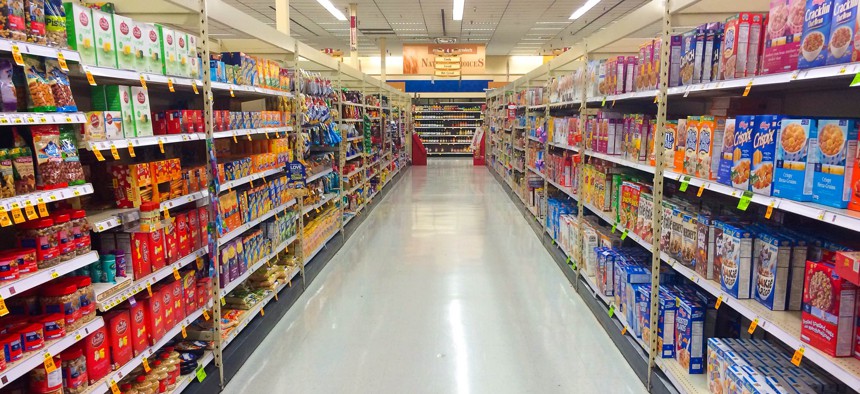Share of Kids Facing Food Insecurity Still Above Pre-Recession Levels

Grocery store shelves. shutterstock

Connecting state and local government leaders
“In 16 states, more than one-in-five children live in food insecure households,” new research from The Hamilton Project notes.
In 23 states, the share of children living in households that had inadequate access to food was higher in recent years than it was just before the Great Recession, according to new research.
Those and other findings are presented in an article that The Hamilton Project, a Brookings Institution initiative, published on Friday. It points out that while the economy has recovered since the Great Recession based on many metrics, “food insecurity” is still up.
A household is considered to be food insecure, the Hamilton Project article explains, if it does not have consistent access to adequate food due to a lack of money or other resources.
Nationwide, the proportion of food insecure households with kids in 2016 was 16.5 percent, down from a recession-era high of 21.3 percent, but still above the 2007 level of 15.8 percent.
But the authors of the article, Lauren Bauer and Diane Whitmore Schanzenbach, note: “National trends conceal even higher levels of food insecurity for many states.”
“In 16 states, more than one-in-five children live in food insecure households,” they go on to write.
During the timeframes the researchers looked at, there are only four states in the U.S. where the share of children living in food-insecure households has improved over pre-recession levels by a statistically significant amount—Iowa, Colorado, Utah and South Carolina.
Iowa performed the best by this metric. The state saw a roughly 25 percent drop in children living in households facing food insecurity during the 2014 to 2016 timeframe, compared to 2005 to 2007.

But in nearly half of the states, the rate of kids living in food insecure households increased by statistically significant amounts between the same two time periods. In Connecticut, Delaware, and New Mexico the rate increased by about 50 percent, in Alabama it nearly doubled.
"To reduce exposure to food insecurity and very low food security among children, Congress should consider increasing SNAP benefit levels, especially to households with children," the article says.
Nutrition programs are getting some attention in Congress right now, as the House and Senate prepare for “farm bill” negotiations.
House lawmakers narrowly passed a version of the legislation earlier this month that includes work requirements for some adults and other controversial provisions that would affect food stamps, known formally as the Supplemental Nutrition Assistance Program, or SNAP.
A Senate approved measure does not include the hot button SNAP language.
The full article published by The Hamilton Project can be found here.
Bill Lucia is a Senior Reporter for Government Executive's Route Fifty and is based in Washington, D.C.

NEXT STORY: Thousands of Coastal Properties at Risk for Chronic Flooding





